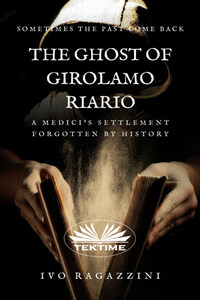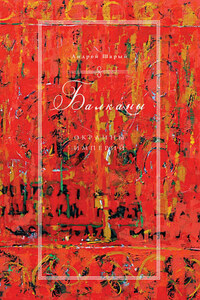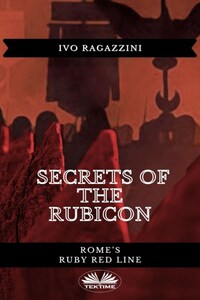This is the story of someone called Girolamo Riario, nephew or perhaps illegitimate son of Pope Sixtus IV, who ruled and was murdered over five centuries ago in the city of Forlì, but which few or none seem to remember anymore.
So this story is about a conspiracy that happened five centuries ago and since then, even if a lot has changed, it seems that sometimes the story keeps popping up.
Contrary to what one might think, this is not a new story, but an old story forgotten by everyone, which every now and then resurfaces and repeats itself over time.
It seems that, for some mysterious reason, these facts fluctuate and float over time as something that does not want to be forgotten.
Now, a question to ask to try to understand things like this could be:
Why does something that happened many centuries ago continue to fluctuate over time?
Or:
Why does something seem unwilling to cease and go beyond its time?
Well, there may be a couple of reasons for understanding these things.
One is that there are a lot of behind the scenes and things not well inspected on those facts.
And the other is that unclear and incomplete things seem to go on long and come back to the surface in time.
Which of the two will be the truth?
It could be a little one and a little the other and you will find out for yourself as you read the rest of this story.
Good discovery.
The author
At the end of August 2010 a person, while under the town hall of Forlì, saw the shadow of a figure dancing on the external walls near a window on the first floor of that building.
Since it was evening, but it was still sunny, he believed it was a reflection on the glass and did not give it much importance.
But a few days later he saw that shadow moan with a deep cut in the head go out of a room in the city hall and run away into the corridor.
Later someone else told not only that he had seen the same shadow but also had heard it speak.
The testimonies said they saw a man with a part of his head split or missing telling and complaining about wanting to defend his lady in danger and asking for revenge against someone who had betrayed him.
Some details of these sightings were then told on January 31, 2011, on the front page in the local chronicles of Forlì and, to tell the truth, there were other people who trusted to have seen him even if they wanted to remain anonymous.
At a first glance some thought that it was Jacopo Feo, the second husband of Caterina Sforza, but according to the author, it was an old story forgotten by everyone's memory which dated back to 1488, when Riario was assassinated in the palace town of Forlì by three men who stabbed him on the first floor and then threw him in the square below, a story that many historians seem to have forgotten or put aside for some reason.
But what is known about Riario today?
Shortly. Currently it is known that an alleged image of him has remained, or rather has been saved in the Vatican, due to the fact that it was portrayed alongside his uncle, Pope Sixtus IV, by the painter from Forlì, Melozzo degli Ambrogi.
And even in Forlì, where he governed and was assassinated, almost nothing remains of him and although at the time he was the general commander of the pontifical army, very few still know today who was really this man, why he was assassinated and who were the real instigators.
Furthermore, as you will see later, many characters and details of this story were forgotten and buried under a kind of damnatio memoriae>1, that is condemned to be forgotten by people's and historical memory.
But memories cannot be completely erased and, as soon as you look at them well, they somehow seem to resurface and reaffirm their presence as if they were protesting that they had been put aside for too long.
And one could speculate that such a hunger for historical memory could create forgotten things that persist and resurface over time which can also be called ghosts of the past if you prefer.
Written quickly and fluently, halfway between essay and narration, this historical tale perhaps reveals for the first time in a frank and direct way many unthinkable facts, places and background, which happened to a person called Girolamo Riario, first husband of Caterina Sforza and nephew of Pope Sixtus IV, assassinated over 500 years ago by a conspiracy in the town hall of Forlì.









